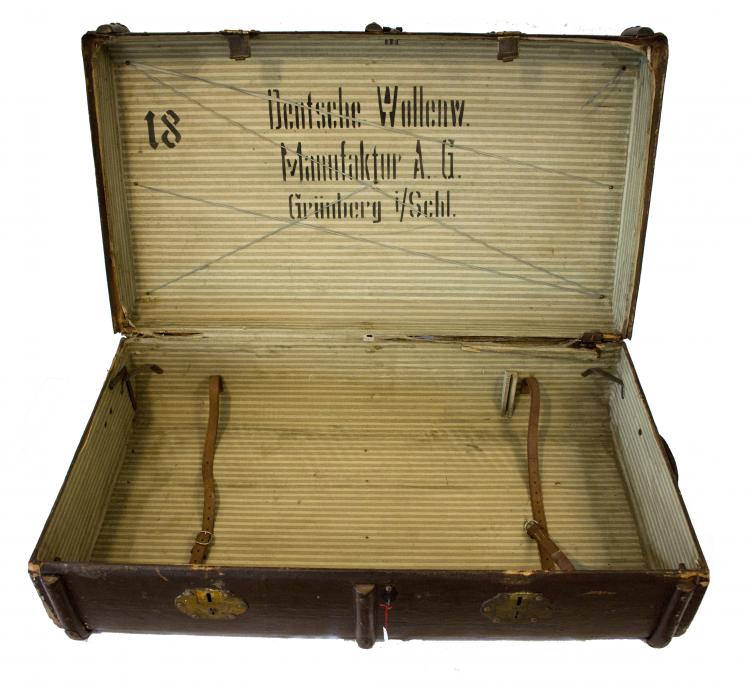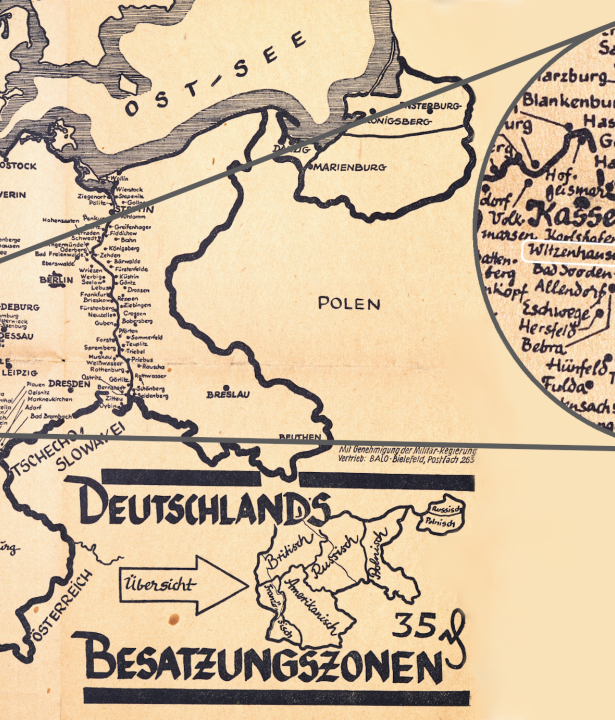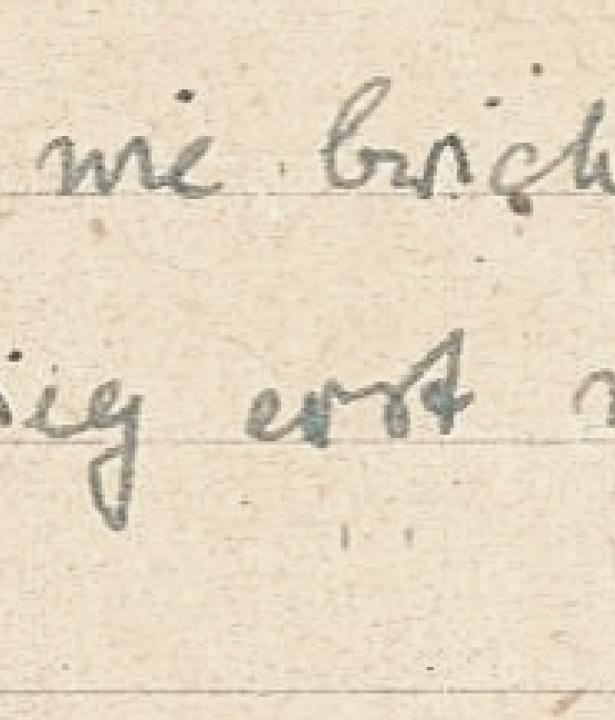Over 100 years, and it's still on the move – despite its rather plain appearance, this old brown case has had a rather impressive "career". It was once a sample case for woolen fabrics, a trusted companion on vacation trips, a means of transportion on the run and a piece of furniture in the bare dreariness of a home for refugees. Today, on loan from HAUS SCHLESIEN, it is an exhibit in the Museum of the Lubuskie Region in Grünberg (Muzeum Ziemi Lubuskiej w Zielonej Górze), and a silent witness to a hundred years of history.
Text
By definition, a suitcase is used to transport something – first and foremost, one thinks of items of clothing and travel accessories, perhaps also documents or samples. But a suitcase is always associated with memories, and every journey adds more. These mostly very personal memories often contain a piece of family, local or contemporary history, or sometimes a little bit of everything, like this 90cm-wide brown suitcase, which was once used to transport textile samples and accompanied its owner Ilse from childhood to old age.
For several years, it has been kept in the HAUS SCHLESIEN collection. The words "Deutsche Wollenw. Manufaktur A.G. Grünberg i/Schl." printed on the inside of the linen-lined lid reveal its original use as a sample case for the Deutsche Wollwaren Manufaktur Aktiengesellschaft (German Woolen Goods Manufactory) in Grünberg. The origins of this company, which at the time was one of the largest mills in the carded yarn industry in Germany, dates back to 1878. It produced men's and women's ready-to-wear fabrics as well as dress and hat fabrics. In the 1920s, the company employed around 3,000 people and exported its goods to Great Britain, Northern Europe and America.
How it came into the possession of Ilse's family is not known, but she remembers that the suitcase "was gladly used for travel [because] the clothes could be laid full-length inside, so they wouldn't be creased when unpacked." In January 1945, as the front moved ever closer, Ilse, then 12 years old, and her younger brother were taken from Grünberg to Forst (Lausitz) to live with their grandparents. On February 12, her mother also arrived, and just one day later the three of them joined the stream of refugees heading west. The large brown suitcase accompanied them on the wagon, which was pulled by two horses. Its contents never reached their destination, however, because Soviet soldiers broke it open on the way and looted almost everything. But the suitcase remained and became Ilse's faithful companion for decades.
At first, it housed the last belongings of the refugee family, then it protected the hand-woven woolen fabrics from being eaten by mice and, finally, it contained Ilse's books and pencils for school. In adulthood, Ilse moved several times – taking the suitcase with her each time. And whenever she opened the lid, there were the memories of a happy childhood and of "home." Recently, the suitcase embarked on another journey – back to its roots, so to speak. It was loaned to the Museum of the Lubusz Region in Grünberg (Muzeum Ziemi Lubuskiej w Zielonej Górze). There it has found its place in the new permanent exhibition on the post-war history of Grünberg alongside an old classic handcart. Many people took carts like this when they fled as the only means of transport for their belongings, and thus it symbolizes the loss of their homeland at the hands of the Germans. The head curator writes about this – that it was very important to her "that the Germans are also visible in the exhibition."


When I open its lid and read: GRÜNBERG IN SILESIA, my happy childhood is there again, right in front of me. Bernadett Fischer / Haus Schlesien, CC BY-NC-SA 4.0
When I open its lid and read: GRÜNBERG IN SILESIA, my happy childhood is there again, right in front of me. Bernadett Fischer / Haus Schlesien, CC BY-NC-SA 4.0


The sample case from Grünberg: its eventful and moving history has not passed it by without a trace. Bernadett Fischer / Haus Schlesien, CC BY-NC-SA 4.0
The sample case from Grünberg: its eventful and moving history has not passed it by without a trace. Bernadett Fischer / Haus Schlesien, CC BY-NC-SA 4.0
Text
English translation: William Connor






